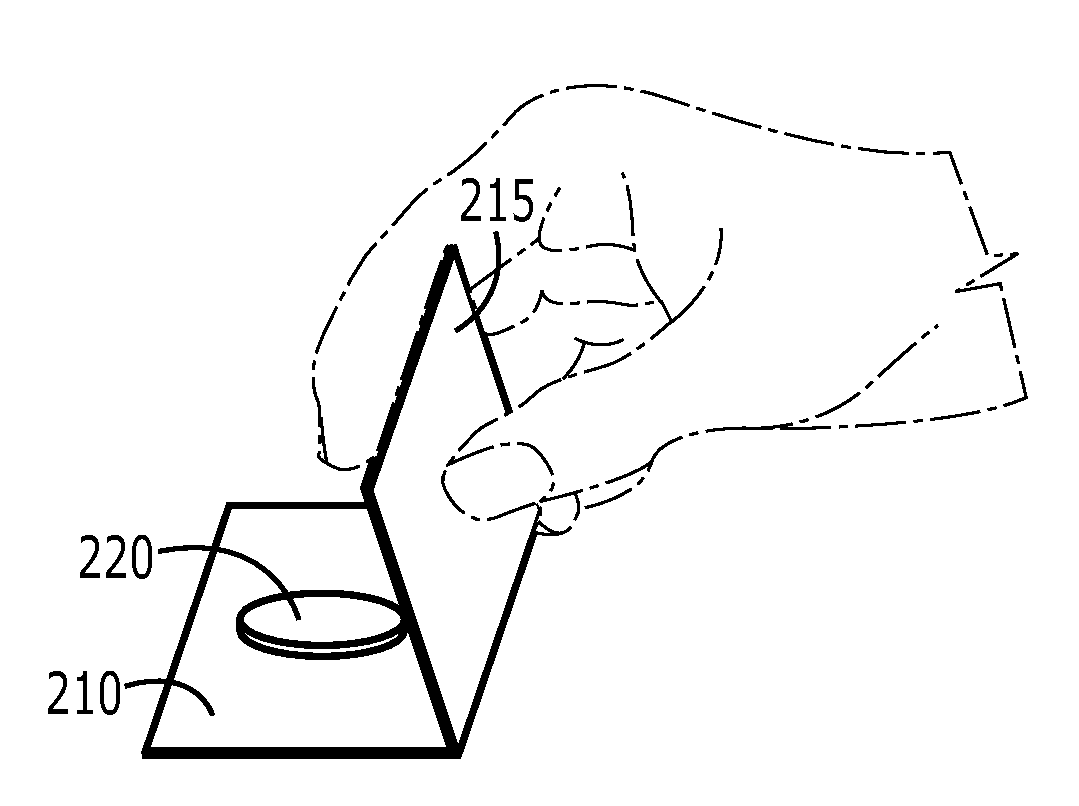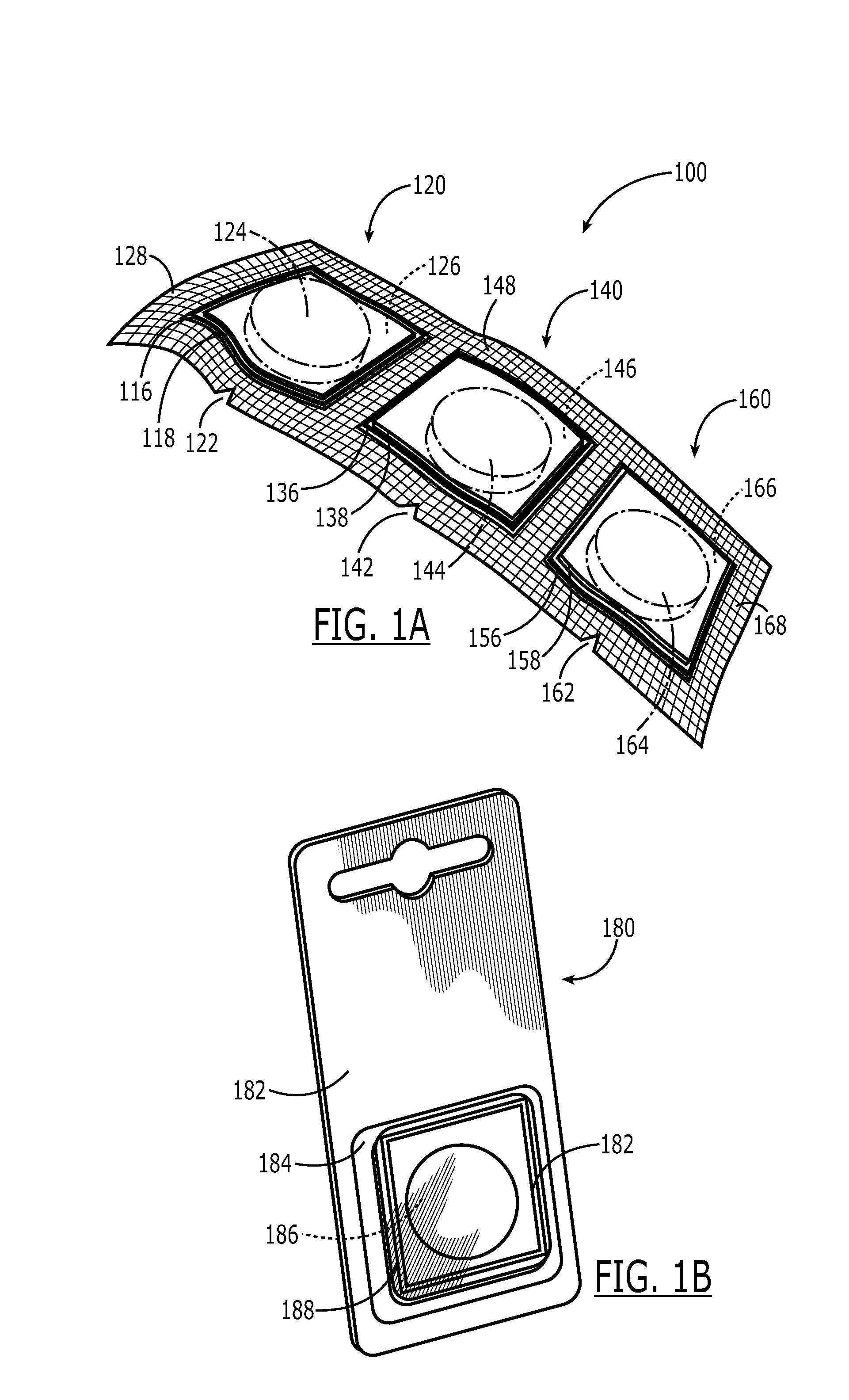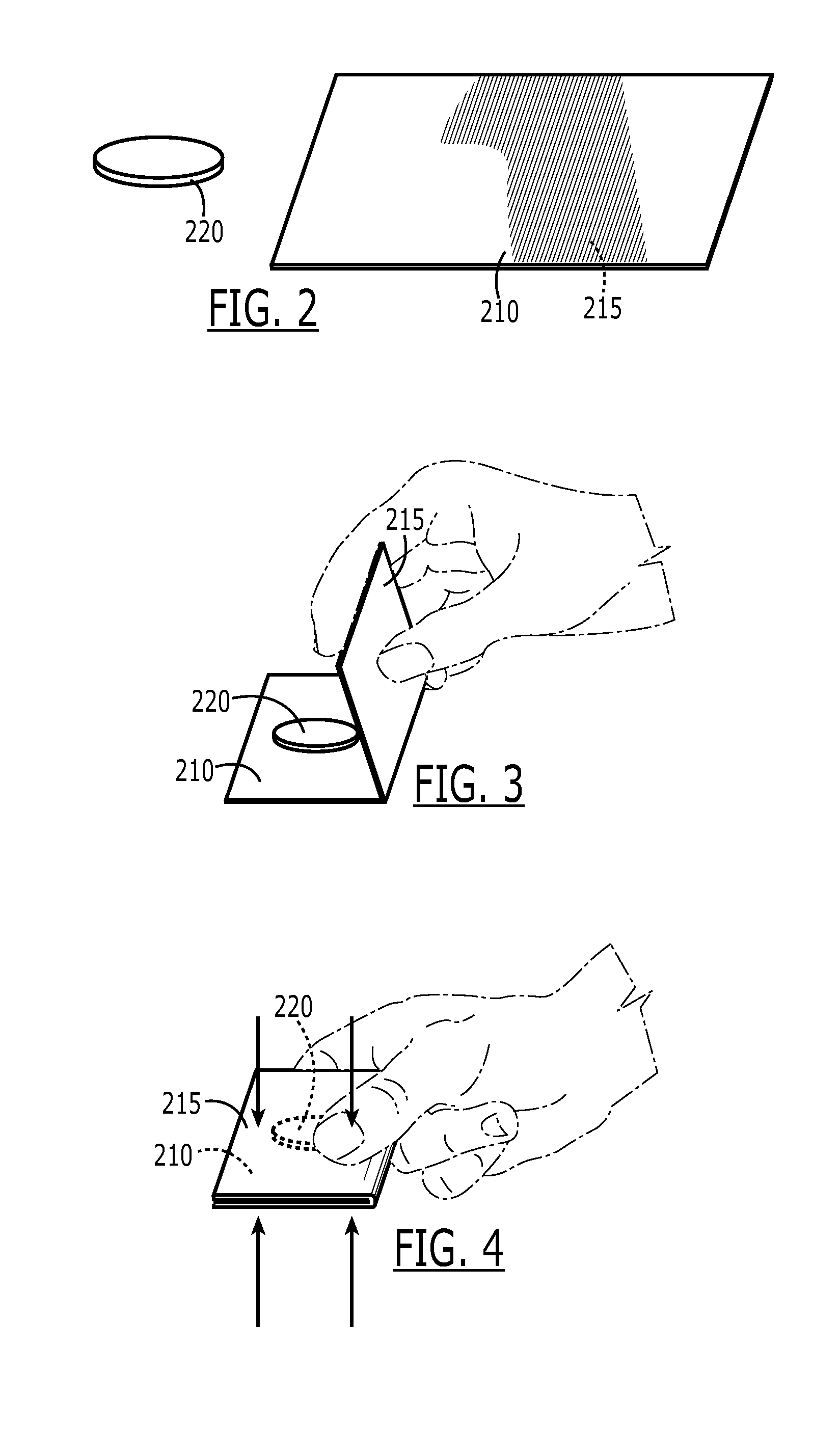Systems and methods for electrical storage device isolation
a technology of electrical storage device and isolation system, which is applied in the direction of primary cell maintenance/service, paper/cardboard containers, cell components, etc., can solve the problems of inability to easily estimate the remaining life of a battery, difficulty in carrying additional batteries, etc., and achieves the effect of efficiently containing a used/expended electrical storage device without risking exposure to toxic chemicals or long-term environmental damag
- Summary
- Abstract
- Description
- Claims
- Application Information
AI Technical Summary
Benefits of technology
Problems solved by technology
Method used
Image
Examples
second embodiment
[0027]Reference is next made to FIGS. 2-4, which illustrate a method of electrically isolating a battery in accordance with the present invention. The method of electrical isolation includes providing an electrical storage device, such as the illustrated coin cell battery 220, and an adhesive member, such as a substantially two dimensional member with an adhesive side 210 and a non-adhesive side 215. As described above, the adhesive side 210 may include some form of adhesive agent to generate a repeatable adhesion. It will be appreciated that the adhesive side 210 may include one or more adhesive regions that do not necessarily extend across the entire two dimensional surface of the adhesive side. For example, an adhesive region may include a non-adhesive gap corresponding to the battery 220 and / or the location at which the folding occurs (not shown). A surface of the battery 220 is coupled to a first portion of the adhesive side 210 within the two dimensional area of the adhesive s...
third embodiment
[0028]Reference is next made to FIGS. 5-7, which illustrate a method of electrically isolating a battery in accordance with the present invention. The method of electrical isolation includes providing an electrical storage device, such as the illustrated coin cell battery 320, and two adhesive members, such as the first and second members with adhesive sides 310, 330 and non-adhesive sides 315, 335. As described above, the adhesive sides 310, 330 may include some form of adhesive agent to generate a repeatable adhesion. It will be appreciated that the adhesive sides 310, 330 may include one or more adhesive regions that do not necessarily extend across the entire two dimensional surface of the adhesive side. For example, an adhesive region may include a non-adhesive gap corresponding to the battery 320. A surface of the battery 320 is coupled to a portion within the two dimensional area of the first adhesive side 310, as illustrated. The coupling may be achieved by either adhesion o...
PUM
| Property | Measurement | Unit |
|---|---|---|
| Force | aaaaa | aaaaa |
| Volume | aaaaa | aaaaa |
| Adhesion strength | aaaaa | aaaaa |
Abstract
Description
Claims
Application Information
 Login to View More
Login to View More - R&D
- Intellectual Property
- Life Sciences
- Materials
- Tech Scout
- Unparalleled Data Quality
- Higher Quality Content
- 60% Fewer Hallucinations
Browse by: Latest US Patents, China's latest patents, Technical Efficacy Thesaurus, Application Domain, Technology Topic, Popular Technical Reports.
© 2025 PatSnap. All rights reserved.Legal|Privacy policy|Modern Slavery Act Transparency Statement|Sitemap|About US| Contact US: help@patsnap.com



